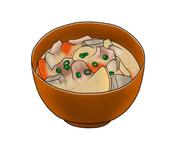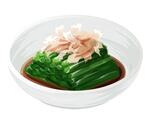- Yokohama-shi Top Page
- Tsuzuki Ward Top Page
- Health, medical care, welfare
- Health, medical care
- health promotion
- Health promotion of workers
- Improving the eating habits of the working generation! Tsuzuki Vegetable Challenge
The text is from here.
Improving the eating habits of the working generation! Tsuzuki Vegetable Challenge
Last updated on March 3, 2025.

- What is Tsuzuki Vegetable Challenge?
- Introduction of initiatives
- How much should I eat vegetables?
- One more vegetable that can be bought at supermarkets and convenience stores
- At home! One more vegetable that anyone can do.
- A device that makes it easier to eat vegetables
- Nutrients contained in vegetables
- Other ingredients contained in vegetables
- Message from a Dietitian
- List of Sources
What is Tsuzuki Vegetable Challenge?
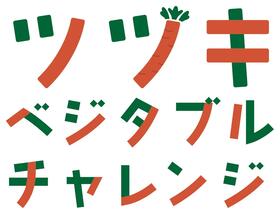
The Tsuzuki Vegetable Challenge is an initiative to raise the interest of working generations in vegetable intake.
※The details of the program will be updated from time to time.
Current status and issues of dietary life
・Percentage of Tsuzuki residents who eat well-balanced meals … 34.4%(※)
・Average vegetable intake of Yokohama citizens … 291g (*) (The target value for vegetable intake set by the government is 350g)
⇒ If left unchecked, the risk of hypertension, diabetes, dyslipidemia, etc. will increase!
※ Based on the Third Health Yokohama 21 Data
Initiatives 1 [Lawson x Tsuzuki Ward ] Post POPs at cooperating stores


Awareness-raising POPs were posted at the fresh food sales floor of Lawson Inc.'s cooperating stores.
<Display period> From Sunday, September 1, Reiwa 6 to Monday, September 30
<Cooperating stores> 20 stores in Tsuzuki Ward
※Yokohama City and Lawson Inc. have concluded a comprehensive cooperation agreement on improving residents' services and revitalizing the community. (May 2009)
This POP notice was also implemented based on this comprehensive cooperation agreement.
(Reference) Press release material for comprehensive cooperation agreement between Yokohama City and Lawson
Initiatives 2 YouTube Advertisement
A 15-second animation video that enlightens one vegetable plus one product has been posted on YouTube ads.
<Advertisement period> From Sunday, September 1, Reiwa 6 to Monday, September 30
※This video is also posted on the YouTube channel of Yokohama City. Check it out!
Initiatives 3 Posted an article on the regional information site "RareA (RareA)"

At the local information site "RareA" developed by Town News, we interviewed Tsuzuki Vegetable Challenge initiatives.
[First]
I want to start with "Autumn of Appetite" now! For my future self, now is "vegetable plus one!" – Neighborhood information of Kanagawa and Tokyo Tama – Rare rear (rarea.events) (outside site)
[Second]
Yokohama B Corsares supports "healthy eating habits" in Tsuzuki-ku, Yokohama! By adding vegetables for the fist held with the victory guts pose, we will support your future health! – Neighborhood information of Kanagawa and Tokyo Tama – Rareria (outside site)
Initiatives 4 Enlightenment in the Yokohama B Corsares game
At the Yokohama B Corsares game venue held on Sunday, November 10, 2024, we raised awareness to raise interest in vegetable intake. .
 Booth exhibition of vegetable intake checks measured with palms
Booth exhibition of vegetable intake checks measured with palms
 Broadcast video with a large vision
Broadcast video with a large vision
How much should I eat vegetables?

The target value for vegetable intake set by the country is 350g. However, the average vegetable intake of Yokohama citizens is 291g, which is 60g (about one dish) below the national target of 350g.
Increasing the intake of vegetables and fruits has been recognized to reduce cardiovascular disease mortality such as heart disease and stroke (*), and taking vegetables will lead to your future health.
Let's aim for the target of 350g by adding about one more dish of vegetable dishes!
※ Explanatory materials for promoting Health Japan 21 (Third) (Part 1)
Example of combination of 350g of vegetables per day
| Breakfast | Lunch | Dinner | |
|---|---|---|---|
|
|
|
|
| Amount of vegetables | 〇 Vegetable salad |
〇 Yakisoba |
〇 A lot of miso soup |
Add a little to your usual meal! One more vegetable that can be bought at supermarkets and convenience stores
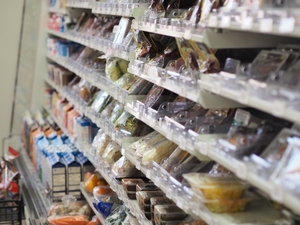
■ Vegetable salad
■ Kinpira burdock / Renkon no kinpira
■ Spinach sesame
■ Tosa-simmered bamboo shoots
■ Boiled dried radish
■ Miso soup and soup with a lot of ingredients Etc.
At home! One more vegetable that anyone can do.
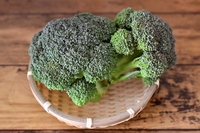
〇 1/3 of frozen broccoli or 3-4 bunch (approximately 80-100g)
☞Put it in a microwave and add mayonnaise or your favorite dressing.

〇 2 pieces of boiled food using frozen pumpkin (about 80g)
①Put frozen pumpkin, seasonings (1 teaspoon of 3 times concentrated noodles, 1 teaspoon of sugar, 50ml of water) in a bakeware
②Wrap it softly and heat it at a microwave oven 600W for 4 minutes, and if it is not cooked, heat it for an additional 1-2 minutes (OK if the chopsticks are stabbed quickly)

〇 1/2 chilled tomato tomatoes (about 80g) or 4-5 mini tomatoes (about 70g)
☞Cut into easy-to-eat sizes and cool in the refrigerator.
★ A little addition ★
You can easily consume vegetables simply by warming your favorite frozen vegetables in a microwave oven and adding them to cup noodles and instant noodles that you always eat.
A device that makes it easier to eat vegetables
① Eat it by heating it from raw
Stir-fry or boiled reduces the bulk, making it easier to take a large amount at a time. Also, since it becomes soft, digestion and absorption improves.
② A lot of soups and soups
Put plenty of vegetables in soups such as miso soup and soup, potov, etc. It is also recommended to use dry vegetables. Also, having a lot of ingredients helps to reduce the salt content of the soup.
③ Use cut vegetables and frozen vegetables to make ready-to-eat and regular vegetables.
・It can be eaten immediately when you want to eat, so you can easily eat vegetables even when you don't have time.
・It saves time and effort of cooking, suitable to cook everyday meals easily.
・It is very useful to add a little bit, such as when the number of items is insufficient.
[For those who have trouble with the recipe]
○Official Cookpad of Yokohama City (outside site)
○Recipe recommended by Tsuzuki Ward Healthmate
Nutrients contained in vegetables
Dietary fiber
〇 Water-soluble dietary fiber: It softens the stool and reduces the absorption of cholesterol
It has the effect of increasing good bacteria in the intestine to improve the intestinal environment, reducing the rise in blood sugar after meals, and suppressing the absorption of cholesterol.
Vegetables (per 100g of edible portion)
☞Cabbage, radish, moloheiya, okra, Tomorrow, Rakkyo, Echalott, Avocado
〇 Insoluble dietary fiber: Improve bowel movements, prevent overeating, and improve the intestinal environment
It increases the bulk of stool, leading to prevention of constipation. In addition, swelling in the intestine causes a feeling of fullness, prevents overeating, and promotes the excretion of harmful substances (carcinogens).
Vegetables (per 100g of edible portion)
☞Cabbage, radish, moloheiya, burdock, broccoli
| Name of vegetable | Water-soluble dietary fiber (per 100g) | Insoluble dietary fiber (per 100g) | Estimated amount of amount to be eaten at a time (g) | Included in the amount you eat at a time |
|---|---|---|---|---|
| Cabbage | 0.4 | 1.4 | 100g (2 large leaves) | 1.8 |
| Radish (root) | 0.5 | 0.9 | 100g (about 3.5cm slices of thick part) | 1.4 |
| Moloheiya | 1.3 | 4.6 | 50g (4 to 5 bottles) | 3.0 |
| Burdock | 2.3 | 3.4 | 30g (approximately 1/4 bottles) | 1.7 |
| Broccoli | 0.9 | 4.4 | 90g (3 to 4 bunchs) | 5.9 |
<Vegetables that are easy to consume in one dose>
Broccoli, green soybeans, okra, pumpkin, carrot, radish leaves, lotus root, cabbage, bamboo shoots, mizuna, burdock, spinach, avocado, dried radish (boiled)
Vitamin A

It is essential for eye health and keeps skin moist.
In addition to maintaining vision, it maintains the health of the cells that make up the skin and mucous membranes of the whole body and supports various physiological effects.
Insufficient can lead to night blindness (dickness and difficulty seeing things at night), dry skin, and reduced immunity.
It is abundant in dark vegetables, but only the skin is dark and is not often contained in whitish vegetables (eggplant, cucumber, etc.).
Because it is fat-soluble, cooking with oil will increase absorption.
Vegetables (per 100g of edible portion)
☞Moroheiya, carrot, spinach, spring chrysanthemum, western pumpkin
| Name of vegetable | Vitamin A (per 100g) | Estimated amount to eat at a time (g) | Estimated amount of vitamin A (μg) to eat at a time |
|---|---|---|---|
| Moloheiya | 840 | 1/2 bundles (about 50g) | 420 |
| Carrot | 720 | 2 sticks (about 30g) | 216 |
| Spinach | 350 | 1/2 bags (about 100g) | 350 |
| Spring chrysanthemum | 380 | 1/2 bags | 304 |
| Western pumpkin | 330 | 2 freezes | 264 |
Vitamin C

Antioxidant action that enhances immunity, keeps skin and mucous membranes strong.
It is an essential vitamin for the production of collagen, which makes up the skin, blood vessels, and bones.
The inhibition of the production of melanin has the effect of preventing and improving stains. In addition, it has the effect of increasing iron absorption and improving immunity to prevent disease.
In addition, it stabilizes the mind by autonomic nervous regulation action, etc.
Insufficient can lead to necrosis (fragile blood vessels and more likely to bleeding), fatigue, and muscle weakness.
Vegetables (per 100g of edible portion)
☞Broccoli, canola flower, bud cabbage, cauliflower, turnip leaf
| Name of vegetable | Vitamin C (per 100g) | Estimated amount to eat at a time (g) | Estimated amount of vitamin C (mg) at a time |
|---|---|---|---|
| Broccoli | 140 | 3-4 bunch (about 90g) | 126 |
| canola flower | 110 | 1/2 bags (about 80g) | 88 |
| Bud cabbage | 160 | 3 pieces (about 50g) | 80 |
| Cauliflower | 81 | 3-4 bunch (about 90g) | 72.9 |
| Turnip leaves | 82 | 1 piece (about 80g) | 64 |
Vitamin K

It helps absorb calcium, essential for blood coagulation factors.
Although it helps blood coagulation, it is also involved in the synthesis of components that suppress blood coagulation. It works well in both coagulation and suppression.
It is also essential for maintaining bone health and is also effective in preventing osteoporosis.
Vegetables (per 100g of edible portion)
☞Moroheiya, tomorrowba, spinach, radish, turnip leaves
| Name of vegetable | Vitamin K (per 100g) | Estimated amount to eat at a time (g) | Estimated amount of vitamin K (μg) per dose |
|---|---|---|---|
| Moloheiya | 640 | 1/2 bags (about 50g) | 320 |
| Tomorrow | 500 | 1/3 bags (60g) | 300 |
| Spinach | 270 | 1/2 bags (about 100g) | 270 |
| Radish | 270 | 100g (round cut: 3.5cm) | 270 |
| Turnip leaves | 340 | 1 piece (about 80g) | 272 |
Folic acid

Helping the production of red blood cells (hematopoietic action), important for the development of the body (especially the fetus), and synthesis of proteins that are under skin, hair, and nails.
It is a type of vitamin B group and is a vitamin needed to synthesize DNA. It is very important for the healthy development of the fetus where cell growth is active. Working in making normal red blood cells helps prevent anemia.
It is usually scarce, but hematopoietic function can cause abnormality and cause anemia and neuropathy. Deficiency in pregnant women also increases the risk of developing spinal cord or brain congenital abnormalities in baby/infant.
Vegetables (per 100g of edible portion)
☞Mustard greens, spinach, broccoli, moloheiya, bud cabbage
| Name of vegetable | Folic acid (per 100g) | Estimated amount to eat at a time (g) | Estimated amount of folic acid (μg) at a time |
|---|---|---|---|
| Mustard green | 310 | 1/3 bags (about 80g) | 310 |
| Spinach | 210 | 1/2 bags (about 100g) | 210 |
| Broccoli | 220 | 3-4 bunch (about 90g) | 198 |
| Moloheiya | 250 | 1/2 bags (about 50g) | 125 |
| Bud cabbage | 240 | 3 pieces (about 50g) | 120 |
Potassium

To promote the excretion of sodium (salt) in the body and to keep the condition of cells and blood pressure normal.
It has the effect of promoting the excretion of sodium (salt) in the body. It also plays a role in keeping the function of cells and blood pressure normal and balancing the body.
Insufficient can cause muscle weakness, cramps and stiffness. Excess intake also requires attention, and symptoms such as numbness and electrocardiogram abnormalities may appear.
Vegetables (per 100g of edible portion)
☞Western pumpkin, spinach, komatsuna, cabbage, asparagus
| Name of vegetable | Potassium (per 100g) | Estimated amount to eat at a time (g) | Estimated amount of potassium (mg) at a time |
|---|---|---|---|
| Western pumpkin | 450 | 2 frozen (about 80g) | 360 |
| Spinach | 690 | 1/2 bags (about 100g) | 345 |
| Komatsuna | 500 | 1/3 bags (about 65g) | 325 |
| Cabbage | 200 | 2 large leaves (about 100g) | 200 |
| Asparagus | 270 | 2 bottles (about 50g) | 135 |
Calcium

Make bones and teeth
It is an important nutrient for making strong bones and teeth. It also acts on the function of muscles and nerves and stops bleeding.
Insufficient bone and teeth become weaker, and osteoporosis (bone becomes brittle and becomes more susceptible to fracture) after aging and menopause.
Vegetables (per 100g of edible portion)
☞Turnip leaves, Moroheiya, Komatsuna, bok choy, dried radish
| Name of vegetable | Calcium (per 100g) | Estimated amount to eat at a time (g) | Estimated amount of calcium (mg) at a time |
|---|---|---|---|
| Turnip leaves | 250 | 1 piece (about 80g) | 200 |
| Moloheiya | 260 | 1/2 bags (about 50g) | 130 |
| Komatsuna | 170 | 1/3 shares (about 65g) | 110.5 |
| Bok choy | 100 | 3 leaves (about 60g) | 60 |
| Dried radish (dry) | 500 | 10g (return 40g) | 50 |
Iron

Transporting oxygen to the whole body
It binds to a substance called hemoglobin in the blood and carries oxygen to every corner of the body.
If it is insufficient, hemoglobin in red blood cells cannot be produced, leading to anemia. Symptoms such as palpitations, shortness of breath, tiredness, and pale complexion and eyelids may occur.
Vegetables that contain a lot
☞canola flower, Komatsuna, Mizuna, Spinach, Sunny Lettuce
| Name of vegetable | Iron (per 100g) | Estimated amount to eat at a time (g) | Estimated amount of iron (mg) at a time |
|---|---|---|---|
| canola flower | 2.9 | 2.9 | |
| Komatsuna | 2.8 | 1/3 bags (about 65g) | 1.82 |
| Mizuna | 2.1 | 1 share (about 50g) | 1.1 |
| Spinach | 2.0 | 1/2 bags | |
| Sunny lettuce | 1.8 | 1 sheet (about 30g) | 0.5 |
Other ingredients contained in vegetables
Fight chemicals
Fote chemical is a chemical component in a plant that forms the color, aroma, and acne components of plants. There are about 10,000 species, mainly contained in plants such as vegetables, fruits, and beans.
Its main function is the antioxidant effect that protects the body from damage caused by active oxygen. Originally, the human body has a function to prevent oxidation (antioxidant action), which decreases with aging. Therefore, it has recently attracted attention to the use of antioxidants from outside.
Vegetables that contain a lot
☞Peppers, spinach, leek, tomorrow
Polyphenol
It is a type of antioxidant found in food. Antioxidants have the function of suppressing the generation and function of active oxygen, and removing the active oxygen itself. (From the Health and Welfare Labor Office e-Health Net)
Typical polyphenols include catechin contained in green tea, blueberries and eggplants, sweet potato skin, anthocyanins contained in red wine, broccoli, leek, parsley, etc.
Vegetables that contain a lot
☞Onion, celery, eggplant
Carotenoid
It is a type of antioxidant found in food. (Refer to the Polyphenol section for work.)
It is a general term for pigment components commonly found in green and yellow vegetables. A typical carotenoid is β-carotene contained in lippins, carrots, leek, pumpkins, spinach, etc. contained in tomatoes and watermelons.
Others
The sulfur compounds, one of the fat chemicals, are pungent components such as onions, radishes, and wasabi, and are thought to activate detoxification in the digestive organs.
Message from a Dietitian

〇 The order of eating is also a point.
The Japan Diabetes Society's "Food Exchange Table 7 for Diabetes Eating" (published in 2013) states that "Eating vegetables first" as a way to eat so that blood sugar levels do not rise too much. I am. The dietary fiber contained in vegetables is not absorbed into the body, so it is known that it does not cause a rise in blood sugar after meals, and that it has the effect of suppressing blood sugar rise.
In addition, trying to eat vegetables first can lead to an increase in vegetable intake, resulting in a review of dietary balance. Also, be careful if you rely on supplements unnecessarily, you may get too much nutrients. Eating various kinds of vegetables leads to getting the nutrients needed for the body.
〇 In order to increase the intake, the trick is to "take side dishes every meal, increase the addition of main dishes, and eat a lot of soup".
Ingesting low-energy foods such as vegetables at the beginning of the meal and occupying the stomach space can prevent overeating.
〇 First of all, it is important to eat 3 meals properly.
If you don't have time to cook / don't cook, try choosing another vegetable dish, such as choosing a set meal or lunch box with plenty of vegetable dishes when choosing a restaurant or lunch box or side dish.
※Now we have a variety of vegetables all year round. Let's actively incorporate nutritious “seasonal vegetables”!
List of Sources
・Ministry of Health, Labour and Welfare "antioxidants" e-Health Net (external site)
・Explanatory materials for promoting Health Japan 21 (Third) Ministry of Health, Labour and Welfare (external site)
・Longevity Science Foundation Health and Longevity Net (outside site)
・Five-a-Day Association Facts Collection (outside site)
・Agriculture and Livestock Industry Promotion Organization Vegetable ranking by Nutrition ingredient (outside site)
Inquiries to this page
Tsuzuki Ward Health and Welfare Center Health and Welfare Division Health Promotion Section
Phone: 045-948-2350
Phone: 045-948-2350
Fax: 045-948-2354
E-Mail address [email protected]
Page ID: 617-303-648












